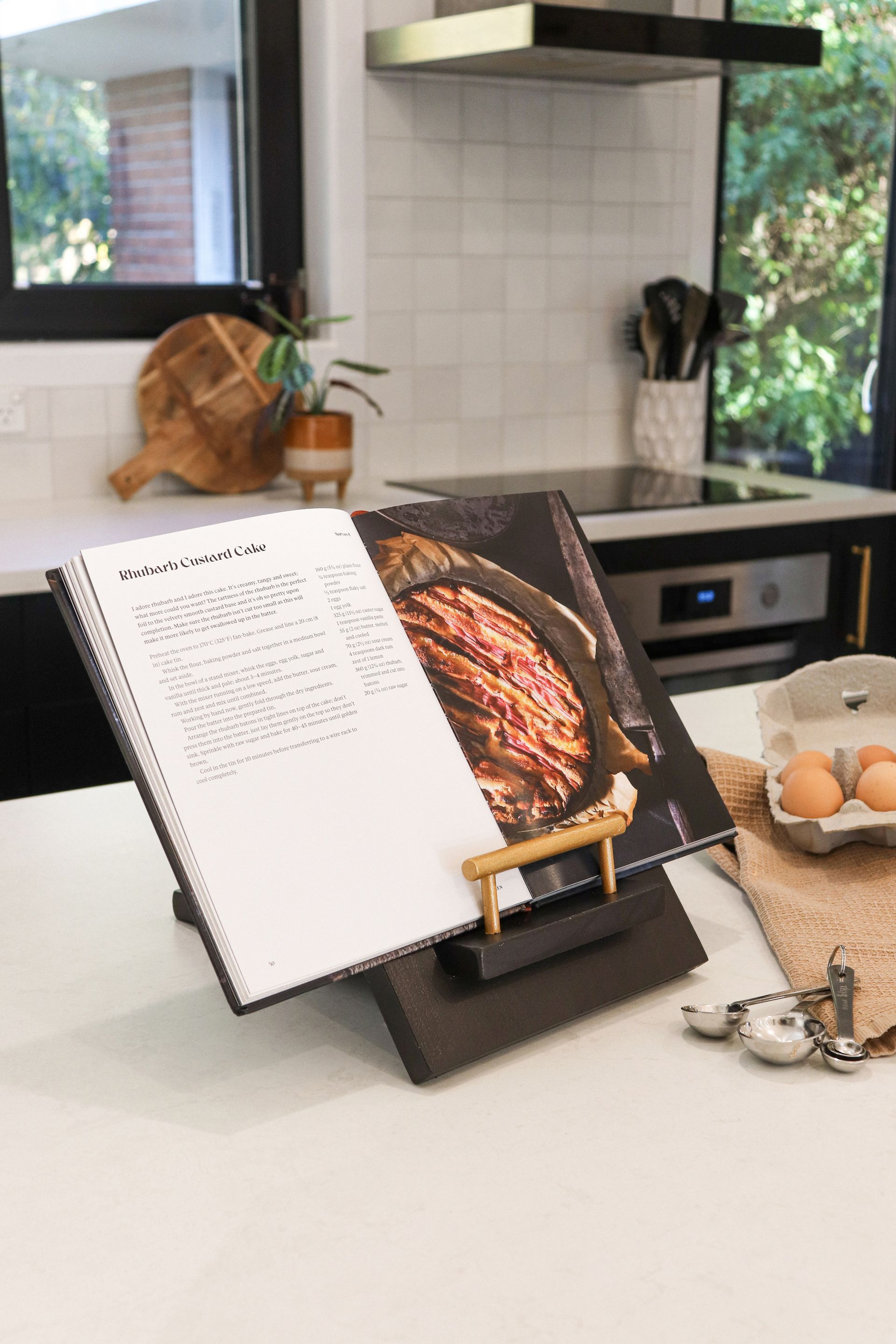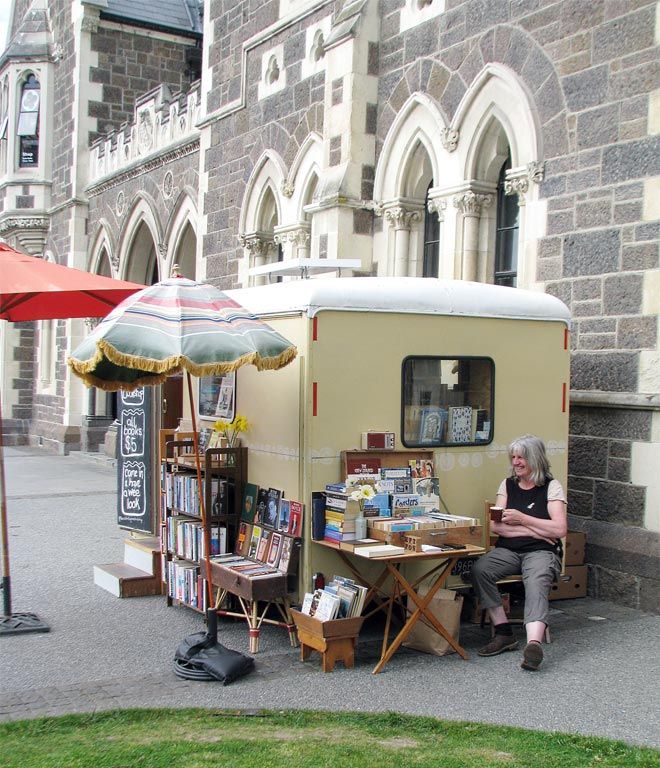The Custard Square Bookshop in front of the Arts Centre on Worcester Boulevard in Christchurch is one of the city’s little treasures. Founder Cathleen Murphy shares her story of how it all started.
If happiness could be made into a real and tangible object, it would probably look a lot like Cathleen Murphy’s adorable vintage caravan at the Arts Centre Te Matatiki Toi Ora. Lined with shelves of second-hand books, this is retro retail at its best.
On a quiet Saturday morning, I follow the chalked-up message on the caravan door: All books $5 – come in and have a wee look. I find a lovely curated space inside, with so many classic titles by both New Zealand and international authors, all just waiting to be dusted off and read again.
As Cathleen explains, her bookshop dream was slow-brewed over several decades of avid book collecting. She was already frequenting church book fairs and the like before her children (Lucy, 29, Ellen, 27 and Zoe, 24) were born.
Several years ago, as the family home was being repaired after the Christchurch earthquakes, her large and growing book stash finally became impossible to ignore. This is what triggered Cathleen into action. Stocking a bookshop was clearly not going to be a problem, but finding comfortable unpretentious premises in the city was difficult in the context of the Christchurch rebuild.
‘I started thinking about a caravan and putting books in it. We saw this caravan on Trade Me: it was square-shaped with small windows – perfect for shelving – so we travelled down and bought it.’
Made in the 1950s by an Otago man, the caravan had originally served as honeymoon accommodation and for many years was towed around the campgrounds of Central Otago. On the trip back to Christchurch with it, Cathleen’s fellow traveller Tony Gray drily observed that it looked like they were being followed by ‘a giant custard square’. The name stuck.
People do sometimes ask for actual custard squares when they rock up at the bookshop, not realising that there’s only one on the premises – namely, the caravan itself! Once a customer presented Cathleen with a special treat – a Denheath custard square from Ballantynes – as a thank you. ‘I love custard squares – in my teenage years I could eat eight in one go!’
Initially Cathleen ran the bookshop in Cathedral Square – ‘I liked the idea of a custard square in a square that had turned to custard!’ – trading there on Fridays and at the Arts Centre on Sundays. The offer of being able to park for longer at the Arts Centre led to her setting up a more permanent base there.
Cathleen enjoys the Arts Centre location. She appreciates the beauty of the heritage architecture and being able to pop into favourite shops like Frances Nation or strolling across to Ilex Café in the Botanic Gardens.
Hanging out at the caravan with her collection of books and meeting other people who love books is the biggest pleasure. ‘I’m a fiction person though I do also like books about people’s lives, short stories and poetry. Every book is somebody’s voice and you can find a connection with most writers…I’ve had some great talks with people here who want to chat about writers. That’s the lovely thing about a bookshop!’
The Custard Square Bookshop has around 2,000 books in stock, displayed on the shelves inside and on fold-up bookcases just outside. Open Wed–Sun, 10 am – 4 pm (unless it’s raining).
Cathleen’s three favourite authors are Maurice Gee, Anne Tyler and Charles Dickens.
Words & Images Kim Newth
Looking for some good reads for the summer break? Try a few of these books recommended by Cathleen Murphy at the Custard Square Bookshop:
- The Shipping News by Annie Proulx
- A Patchwork Planet by Anne Tyler
- Summer’s Lease by John Mortimer
- Crooked Letter, Crooked Letter by Tom Franklin
- Dirt Music by Tim Winton
- Access Road by Maurice Gee
- Three Men in a Boat by Jerome K Jerome
- The Country Girls by Edna O’Brien
- Howards End by E M Forster
- Plainsong by Kent Haruf
- The Secret Scripture by Sebastian Barry
- The Unlikely Pilgrimage of Harold Fry by Rachel Joyce
- A History of Silence by Lloyd Jones
- Bleak House by Charles Dickens
Recent stories





